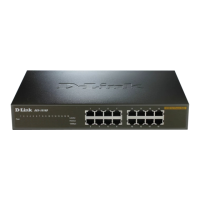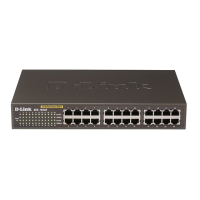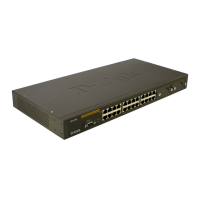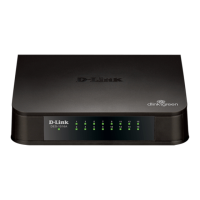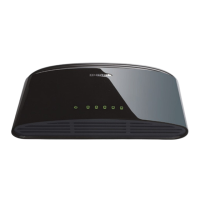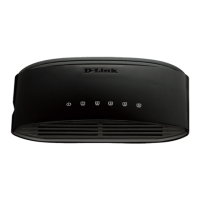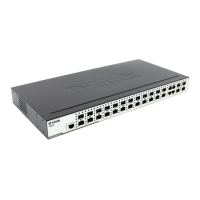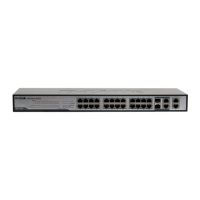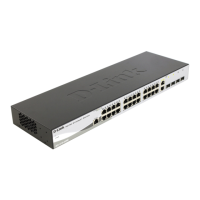Do you have a question about the D-Link DES-1016D - Switch and is the answer not in the manual?
Clarifies the objective of this user guide for the DES-1016D switch.
Defines specific terminology used within the guide, like "Switch" vs. "switch".
Provides a brief summary of the sections covered in the user's guide.
Explains the fundamentals of Fast Ethernet technology and its evolution from 10BaseT.
Explains how QoS reserves bandwidth for important network functions like VoIP and video conferencing.
Details how packet priority tags are mapped to the switch's queues for QoS implementation.
Describes the two priority queues (Q0 and Q1) and how IEEE 802.1p priority levels are mapped.
Lists the items included in the DES-1016D package and instructions for checking contents.
Outlines initial setup steps for the DES-1016D, including placement and ventilation.
Instructions for placing the switch on a desktop or shelf using rubber feet for stability and ventilation.
Steps for mounting the switch in a standard 19-inch equipment rack using provided brackets.
Details the components and LED indicators found on the front panel of the switch.
Explains the functionality of the RJ-45 twisted-pair ports, including Auto-MDI/MDIX.
Identifies the AC power connector located on the rear panel of the switch.
Lists general technical standards, protocols, data transfer rates, topology, and cable types for the switch.
Provides physical dimensions, power consumption, operating temperature, and humidity specifications.
Details the switch's performance metrics, including transmit method, RAM buffer, filtering, and MAC address learning.
Clarifies the objective of this user guide for the DES-1016D switch.
Defines specific terminology used within the guide, like "Switch" vs. "switch".
Provides a brief summary of the sections covered in the user's guide.
Explains the fundamentals of Fast Ethernet technology and its evolution from 10BaseT.
Explains how QoS reserves bandwidth for important network functions like VoIP and video conferencing.
Details how packet priority tags are mapped to the switch's queues for QoS implementation.
Describes the two priority queues (Q0 and Q1) and how IEEE 802.1p priority levels are mapped.
Lists the items included in the DES-1016D package and instructions for checking contents.
Outlines initial setup steps for the DES-1016D, including placement and ventilation.
Instructions for placing the switch on a desktop or shelf using rubber feet for stability and ventilation.
Steps for mounting the switch in a standard 19-inch equipment rack using provided brackets.
Details the components and LED indicators found on the front panel of the switch.
Explains the functionality of the RJ-45 twisted-pair ports, including Auto-MDI/MDIX.
Identifies the AC power connector located on the rear panel of the switch.
Lists general technical standards, protocols, data transfer rates, topology, and cable types for the switch.
Provides physical dimensions, power consumption, operating temperature, and humidity specifications.
Details the switch's performance metrics, including transmit method, RAM buffer, filtering, and MAC address learning.
| Device Type | Switch |
|---|---|
| Form Factor | Desktop |
| Ports | 16 x 10/100 |
| Switching Capacity | 3.2 Gbps |
| MAC Address Table Size | 8K entries |
| Compliant Standards | IEEE 802.3, IEEE 802.3u, IEEE 802.3x |
| Forwarding Rate | 1.488 Mpps |
| Operating Temperature | 0 °C to 40 °C |
| Storage Temperature | -10 °C to 70 °C |
| Humidity | 10% to 90% non-condensing |
| Features | Flow control, auto-negotiation, auto-uplink (auto MDI/MDI-X) |
| Dimensions | 280 mm x 44 mm |
